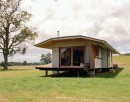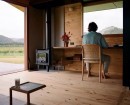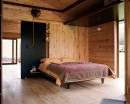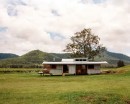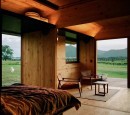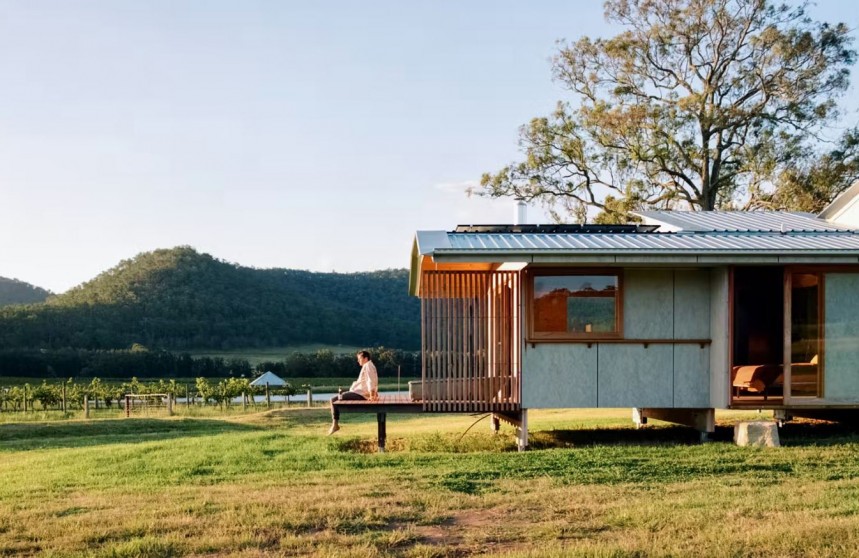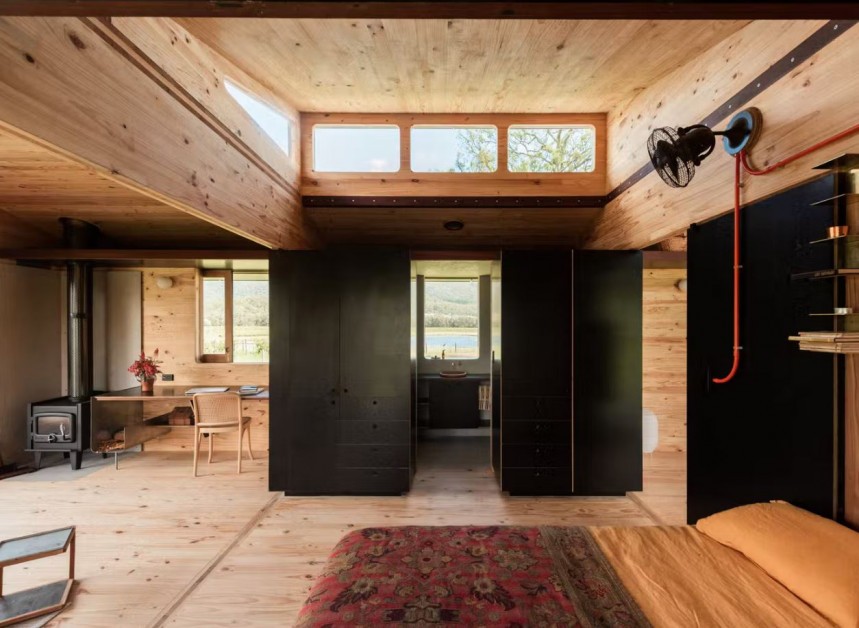Say what you will about Elon Musk and his various undertakings, specifically his most recent ones, but there’s no denying the impact of his electric vehicle company Tesla. Said impact is apparent not just in the automotive market but elsewhere as well.
This is Dimensions X, or DimX for short, a prefabricated, eco-friendly home that aims to be the Tesla of prefab houses. The idea for it came from – duh – Tesla and the inspiration is obvious from the way you can configure and order it online to its reduced impact on the environment and the surroundings where it’s placed. It is the brainchild of Australian entrepreneur Oscar Martin, architect and designer Peter Stutchbury, and lead project architect Alejo De Achaval.
DimX was first introduced to the public in 2020 by means of computer-generated renders. Since then, the trio has worked relentlessly to bring the project to life with the first house. It’s a combination of the Tesla philosophy (and minimalism) and Ikea-like practicality, and it’s quite an elegant option for those looking to downsize, especially if they’re doing it on a strict budget.
Speaking to Dwell just recently, Martin says the idea first popped in his mind as he was building his own house in Bondi Beach, Australia, and he noticed the ballooning budget, delays, uncertainties, and environmental impact of traditional construction work. Oppositely, working with prefab elements seemed a breeze, so he thought about making a house that would use only those.
“I want to do what Tesla has done for auto, only with housing,” Martin announces. The first DimX prototype is called OM-1, a 613 square-foot (57 square-meter) home that comprises a bedroom, a living area, kitchen, bathroom, and porches.
Nonetheless, the idea is that DimX won’t offer standard models to choose from but rather suggestions that serve as starting points. To these, the buyer can add whatever else they want, from more windows or shelves to environmental-focused features like composting or rainwater tanks, green roofs, solar panels, mineral pools, beehives, smart-home tech, energy-efficient white goods, and furniture, or even eco sheets. The layout can also be switched up for different orientations if the buyer wants it.
The houses are made of CLT (cross-laminated timber), considered one of the world’s most sustainable building materials, while also being high-quality, energy-efficient, and durable. DimX houses don’t use any cement during any of the phases of construction. Even for the foundation, the company offers a patented solution called Surefoot Footing, which allows for placement on any type of terrain but with minimal disruption to the surrounding environment.
Even the experience of buying a DimX house is inspired by Tesla in that you can configure it online and, this way, get pricing at every step of the way. Traditional construction comes with unknown costs, even on those projects where costs are calculated early on – one of Martin’s biggest gripes. On the downside, no price range is offered for what could be described as a “standard” model.
Once the order is placed and the deal is finalized, construction kicks off at the company’s shop. According to Martin, it takes up to six weeks to finish a DimX house, and it’s delivered in parts on location. The company is now working to form a network of local builders to help out with assembly, but the goal is to turn this into the ultimate DIY house. “We’re filming a step-by-step guide and hoping that these homes are simple for any home builder to construct,” he explains. “Almost like a piece of Ikea furniture!”
Here’s to hoping none of the Ikea-furniture-assembly memes resurfaces. It would be a shame if you got the entire house put together, only to find that the last screw is missing.
DimX was first introduced to the public in 2020 by means of computer-generated renders. Since then, the trio has worked relentlessly to bring the project to life with the first house. It’s a combination of the Tesla philosophy (and minimalism) and Ikea-like practicality, and it’s quite an elegant option for those looking to downsize, especially if they’re doing it on a strict budget.
Speaking to Dwell just recently, Martin says the idea first popped in his mind as he was building his own house in Bondi Beach, Australia, and he noticed the ballooning budget, delays, uncertainties, and environmental impact of traditional construction work. Oppositely, working with prefab elements seemed a breeze, so he thought about making a house that would use only those.
Nonetheless, the idea is that DimX won’t offer standard models to choose from but rather suggestions that serve as starting points. To these, the buyer can add whatever else they want, from more windows or shelves to environmental-focused features like composting or rainwater tanks, green roofs, solar panels, mineral pools, beehives, smart-home tech, energy-efficient white goods, and furniture, or even eco sheets. The layout can also be switched up for different orientations if the buyer wants it.
The houses are made of CLT (cross-laminated timber), considered one of the world’s most sustainable building materials, while also being high-quality, energy-efficient, and durable. DimX houses don’t use any cement during any of the phases of construction. Even for the foundation, the company offers a patented solution called Surefoot Footing, which allows for placement on any type of terrain but with minimal disruption to the surrounding environment.
Even the experience of buying a DimX house is inspired by Tesla in that you can configure it online and, this way, get pricing at every step of the way. Traditional construction comes with unknown costs, even on those projects where costs are calculated early on – one of Martin’s biggest gripes. On the downside, no price range is offered for what could be described as a “standard” model.
Here’s to hoping none of the Ikea-furniture-assembly memes resurfaces. It would be a shame if you got the entire house put together, only to find that the last screw is missing.

